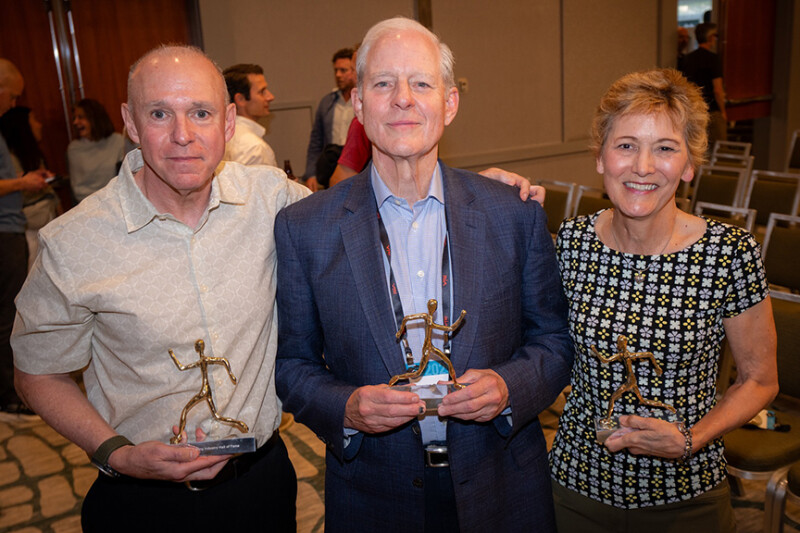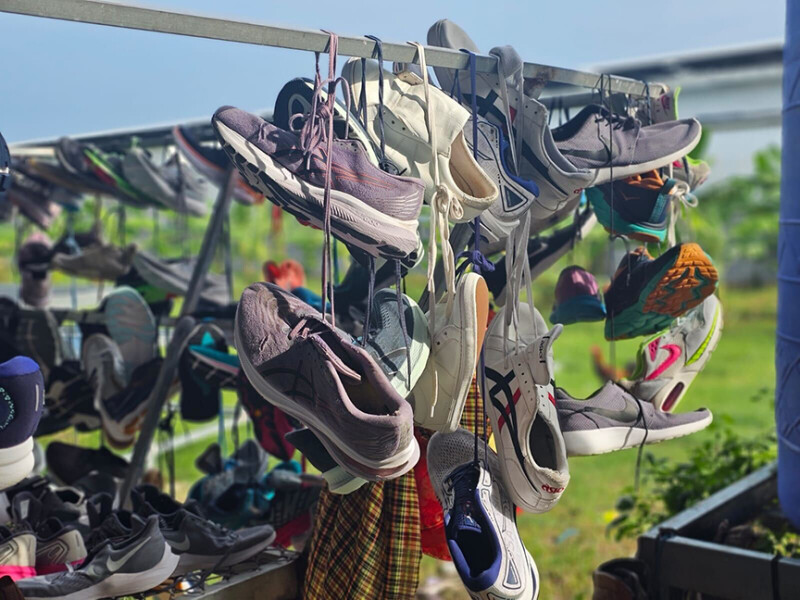Running is elemental, an activity that reaches to people of all abilities. Fresh air, cardiovascular and muscular strengthening, mental clarity — each enhance our overall health. Of course the run specialty business, as advocates for improved quality of life and protection of the environment, is vitally interested in promoting health and fitness without drawbacks.
So how do run specialty retailers get involved and respond to this challenge? Here three retailers present their approaches to these important questions.
What emphasis do you place on a “green” approach to running product?
“I feel like we’re in the infancy of running shoe sustainability. There’s a lot of maturing yet to happen. Most brands are telling a green story, but I don’t experience customers making final purchase decisions based on sustainability yet. It’s more like a feel good add-on value, like when consumers read the Brooks shoe box or the hang tag on a Nike shoe. I believe some consumers are making green purchase decisions, but not at running specialty. These customers are buying Allbirds. That’s the brand I feel is doing the best job capturing green purchases.” — Bob Coll, Owner, Eugene Running Company, Eugene, Oregon
“We place a heavy emphasis on a green approach to product — environmental sustainability is the first set of criteria we judge potential new products on. There are some product categories that still have quite a bit of catching up to do in this regard. But then other product categories, like apparel, make it really easy to decide which products to bring in. Apparel items made of recycled materials have been available for some time now, so it’s much easier to put together an assortment in the stores of a collection of apparel, even from various brands, that all tell at least some extension of the green product story.” — Nick Kovaleski, A Runner’s Mind
“While our customers don’t often inquire about our products’ green initiatives upfront, they deeply value supporting brands committed to eco-friendly practices. For instance, when our staff discusses brands like Mizuno, Newton and Recover Brands, known for prioritizing sustainability, customers recognize the importance of investing in products that offer both comfort and contribute to a healthier planet.” — Steve Moore, Run Moore
So which running brands resonate with runners for their green efforts?
“A lot of the larger brands that have a green approach to their products haven’t necessarily done a great job telling those stories. Reason being, they don’t want to be accused of ‘green-washing.’ Fortunately that perspective is changing and a lot of brands are realizing that it’s worth educating consumers about the green and sustainable aspects of their products. Now they need to master telling those stories authentically to avoid being accused of green-washing.
“Some younger brands have had an easier time getting those messages across because they don’t have a history of negligent product creation. For example, On Running has put sustainability and a green approach to product at the forefront of their design from the beginning. Janji is another younger brand that has placed environmental stewardship and sustainability at the forefront of their messaging from the start. Consumers only know these brands to be green, so they’ve had an easy time adopting runners based on these efforts.
“Some larger brands, like Nike, ASICS and New Balance, are doing a great job keeping their audiences engaged by sharing their progress in sustainable materials innovation. Consumers are interested and when you keep them connected to what you’re working on and the exciting updates to come, they’re all the more interested in your products when they launch.” — Nick Kovaleski
“Typically our customers don’t explicitly express concerns about green practices during their shopping experience, but we have observed a growing interest in eco-friendly options. Although sustainability is not yet a primary factor influencing their footwear purchasing decisions, it’s becoming more prominent in conversations about clothing and apparel. Customers appreciate brands that prioritize sustainability, as it reflects their commitment to quality and environmental responsibility.” — Steve Moore
“There are several specific ways to measure the sustainability of running shoes and different manufacturers seem to invest in predominantly one of those ways — recycling (Nike Regrind), carbon neutral production to delivery (Brooks), lower consumption due to longevity (NNormal) or sustainable and biodegradable materials (Allbirds and Kane recovery).” — Bob Coll
How do your customers demonstrate their concerns about green practices?
“Reuse and recycling programs are at the forefront of green concerns from what I see. Customers want their old shoes to be worn by someone less fortunate or ultimately recycled for the materials. From my perspective it’s a major concern for lots of avid runners that consume a lot of shoes.” — Bob Coll
“The amount of customers who actually demonstrate their concerns about green practices is miniscule, which, of course, is unfortunate. A majority of consumers will continue to purchase items regardless of their composition, whether green or not. Because of that, we need to rely on brands to start producing items that carry that value at the core.
“We’re thrilled to be launching Hylo Athletics at both stores. Their Impact trainer is ‘proof that nature can perform.’ With a shoe composed of bio-based materials like castor beans and sugar cane, and with an established program to send the shoes back at end-of-life for Hylo to recycle them into new shoes, consumers no longer need to even worry about how the shoes are made.
“Most consumers aren’t worrying about it in the first place, so make shoes that eliminate that variable by just being made of the right ingredients to start with and you’ll continue winning consumers with both performance and brand values.” — Nick Kovaleski
Are there local races (you support) with green practices?
“Back in 2019 we partnered with Catherine Elvert of the City of Palo Alto to help them grow their untimed Earth Day 5K into a chip-timed zero-waste race — the Great Race for Saving Water. The City of Palo Alto has a requirement of zero-waste (nothing sent to the landfill) for any event hosted by any of their departments. We used it as a case study to determine the feasibility of hosting zero-waste events. Turns out, it’s possible.
“Since then, we’ve been able to transition our 1000-plus person Gobble Wobble 5K/10K on Thanksgiving Day into a zero-waste event as well. This event includes a pancake breakfast after the run, so there are a lot of elements involved in producing this race; but with the right mindset and the commitment to changing how you operate hosting a race or event with green practices it is absolutely possible. And once we learned how to host larger scale events without sending waste to the landfill, it was easy for us to also implement these practices in-store for any group runs, demo events, etc. that we host on a weekly basis.” — Nick Kovaleski
“While we don’t organize races ourselves, we wholeheartedly support local events and charity races that prioritize green practices. Our involvement extends to sponsoring and participating in these events, as well as promoting environmental awareness among our customers. Additionally, we actively contribute to sustainability efforts in our store by carrying shirts made from recycled yarn, using recycled bags at checkout, accepting and donating used shoes and sponsoring events at our local trail aimed at cleaning and maintaining the environment.” — Steve Moore
Finally, does “going green” make good business sense for you or is it more of a feel-good practice?
“The two don’t have to be mutually exclusive, as ‘going green’ can make both good business sense as well as help me sleep better at night as a leader. I was raised by parents who do a really great job putting the environment first, so I’ll admit that I approached green business practices from a feel good mindset. But when push comes to shove, and numbers need to actually add up in order to continue operation, good business sense also matters.
“When that happens, it’s really about flipping equations upside down and changing your perspective on everything to look at things from a different angle. Sometimes, one of the best ways to go green is to eliminate wasteful elements and when you do that without feeling the need to replace it with an alternative because you realize it was excess in the first place, you’re going to save money because you’re eliminating a line-item altogether.” — Steve Moore
“We definitely recognize the value of green products and actively advertise the sustainable aspects of different products using in-store merchandising and conversation. The importance and effectiveness of sustainability in the running industry will only increase over time and most runners are willing and active participants in the green movement.
“It’s hard to quantify an economic advantage of going green, but it’s easy to realize the implications of not going green. There really is no other logical choice. The biggest consideration isn’t ‘are we going green.’ but rather ‘at what rate of speed in going green makes the most sense.” — Bob Coll







